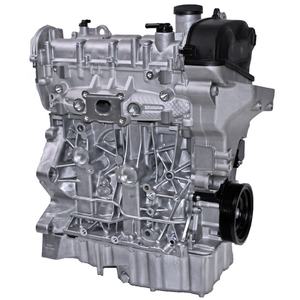Comprehensive Review of a Subcompact Car's Powertrain Capabilities
In the realm of automotive design, the powertrain of a subcompact automobile stands as an essential nexus where performance, efficiency, and technology converge. From the engine's unrelenting search of optimum efficiency to the transmission's smooth choreography of power circulation, every component plays a vital duty in defining the total driving experience.
Engine Performance Analysis
In assessing the engine efficiency of the subcompact car, a thorough evaluation reveals its efficiency and power result under numerous driving problems. The subcompact vehicle's engine, a vital component of its powertrain system, demonstrates extensive performance metrics.
Furthermore, when subjected to rigorous screening scenarios such as high-speed velocity or uphill climbs, the engine shows resilience and responsiveness. Its power result stays constant, giving appropriate acceleration when needed. The subcompact automobile's engine is tailored to fulfill the needs of city driving, where quick acceleration and nimble maneuverability are essential.
Additionally, the engine's design includes modern-day technologies that boost its efficiency attributes. Features like turbocharging or variable valve timing add to boosted power shipment and torque, improving the overall driving experience. To conclude, the engine efficiency of the subcompact auto highlights its capability to supply reliable and trustworthy power output throughout numerous driving conditions.
Transmission Effectiveness Examination
Examining the subcompact car's transmission performance involves assessing its efficiency in transferring power seamlessly across various driving problems. The performance of a transmission system is critical as it directly impacts the total efficiency and fuel economy of the car.
One usual approach utilized to evaluate transmission efficiency is with dynamometer testing, where the power outcome from the engine is measured at the input and outcome shafts of the transmission. By analyzing these facets, engineers can determine areas for improvement and enhance the transmission system for far better general performance and effectiveness.
Fuel Effectiveness Evaluation
The assessment of the subcompact vehicle's fuel effectiveness entails a comprehensive analysis of its consumption rates under various driving problems. Gas efficiency is a critical consider analyzing the total performance and cost-effectiveness of a vehicle. By measuring the amount of fuel eaten per system range took a trip, usually revealed as miles per gallon (MPG) or liters per 100 kilometers (L/100 km), the performance of the subcompact automobile's powertrain can be figured out.

Additionally, innovations in technology, such as hybrid systems, regenerative stopping, and automatic start-stop systems, have actually considerably boosted gas effectiveness in modern-day subcompact cars and trucks. Manufacturers remain to introduce and maximize powertrain elements to enhance fuel efficiency while fulfilling performance needs and environmental guidelines. Reviewing a subcompact auto's gas performance supplies useful understandings for consumers looking for economical and lasting transport options.
Velocity and Handling Assessment
An important facet of examining the efficiency capacities of a subcompact auto exists in examining its acceleration and handling qualities. Acceleration is important as it establishes how swiftly the automobile can reach desired rates, influencing total driving experience and ability to move in various web traffic conditions. opel corsa engine. Subcompact cars are frequently preferred for their nimbleness and dexterity, making velocity from grinding Discover More halt and during overtaking maneuvers vital variables to think about
When it involves taking care of, a subcompact automobile's capacity to navigate corners, preserve security at broadband, and offer a receptive steering feel are extremely important. Tight city roads and winding roadways call for accurate taking care of to ensure motorist self-confidence and security. Aspects such as suspension adjusting, weight circulation, and tire hold play substantial functions in establishing a subcompact auto's general handling prowess.

Powertrain Parts Overview
Upon delving right into the intricacies of a subcompact automobile's efficiency, an extensive exam of its powertrain elements is necessary to understand the automobile's mechanical underpinnings. The powertrain of a subcompact vehicle normally consists of the engine, transmission, driveshaft, differential, and axles. Recognizing exactly how these parts go to website function together is essential in assessing a subcompact vehicle's overall performance, performance, and driving dynamics.
Final Thought
In verdict, the subcompact car's powertrain capabilities have actually been extensively evaluated in terms of engine performance, transmission efficiency, fuel velocity, handling, and effectiveness. The detailed evaluation highlights the relevance of each component collaborating flawlessly to provide ideal efficiency. Overall, the powertrain parts of the subcompact automobile have actually been found to be healthy and effective, making it a dependable choice for chauffeurs seeking a small website here and fuel-efficient vehicle.
In the world of automotive design, the powertrain of a subcompact vehicle stands as a vital nexus where advancement, performance, and efficiency merge.In analyzing the engine efficiency of the subcompact car, a comprehensive evaluation discloses its performance and power output under various driving problems.Analyzing the subcompact car's transmission performance involves assessing its efficiency in sending power perfectly across various driving conditions. Recognizing exactly how these elements work with each other is critical in analyzing a subcompact vehicle's general efficiency, effectiveness, and driving characteristics.In final thought, the subcompact car's powertrain capacities have been thoroughly analyzed in terms of engine efficiency, transmission performance, fuel handling, performance, and velocity.